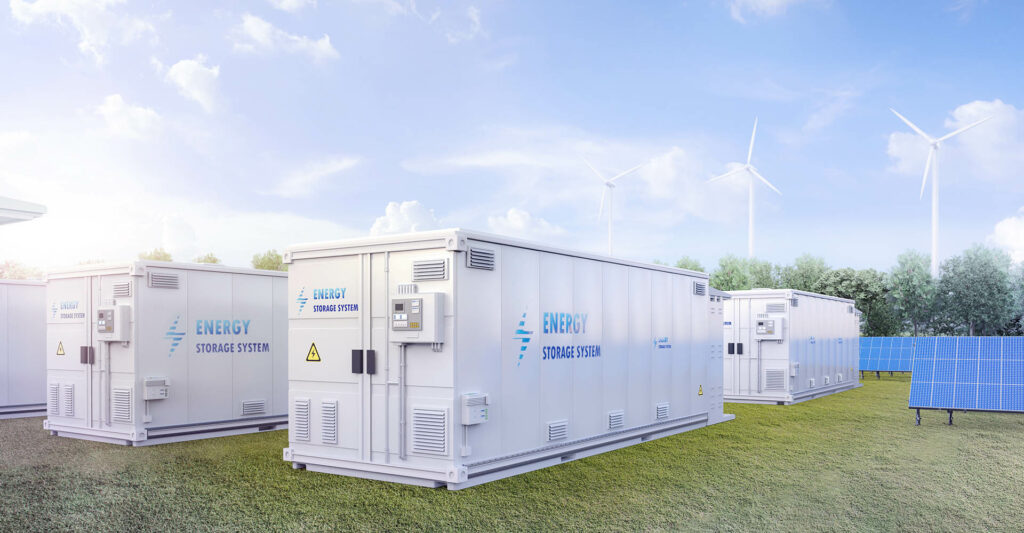
Battery monitoring provides key trend analysis on degradation, safety and availability.
Claudius Jehle, CEO and founder of volytica, explains in an interview with ERNEUERBARE ENERGIEN how to avoid not only short-term failures in storage systems, but also cell defects with potentially safety-critical fire risks.
How do you monitor stationary storage units?
Claudius Jehle: Our battery monitoring evaluates sensor data from batteries and transforms it into trend analyses on degradation, state of health (SoH), safety and availability of the storage systems. Although the raw data is usually available to every customer, the sheer volume – a cacophony, so to speak – and the electrochemical complexity of batteries mean that this analysis is only possible with the right software. We have been doing this for over 10 years! It all started with research on the first storage systems at the Fraunhofer Institute and TU Dresden.
Do you focus on specific battery types or chemistries (LFP, NMC…)?
Claudius Jehle: Our solution is optimized for all battery types! In particular, the strong demand for LFP batteries (also known as LiFePO4) is driving the demand for our solution. LFP batteries are relatively inexpensive and robust, but due to their electrochemical properties they can present significant operational challenges.
What insights does the client gain from the monitoring and over what period of time? How is the analysis presented?
Claudius Jehle: The data is analyzed – or „cracked“ – by our algorithms to reveal meaningful information about degradation, health status and operational risks. One of the most powerful components is the anomaly analysis, which combs through the signal for creeping problems that are practically impossible to detect with the existing electronics. This not only prevents short-term failures (especially with LFP), but also allows cell defects with potentially safety-critical fire risks to be recognized and averted. We also enable maintenance teams to carry out in-depth analyses and warranty monitoring, which greatly simplifies communication with manufacturers to process warranty claims.
This enables our customers to operate battery systems economically, reduce operational risks and even implement second-use concepts. Monitoring is typically continuous, 24/7. We also offer forensic analysis of historical data and commissioning support (Site Acceptance Tests/SAT and Factory Acceptance Tests/FAT) – because unlike PV modules and wind turbines, you can’t see defects and quality problems in a battery!
 Doesn’t such an evaluation usually take place in the stationary storage unit itself?
Doesn’t such an evaluation usually take place in the stationary storage unit itself?
Claudius Jehle: No, surprisingly, continuous evaluation using battery monitoring is not yet widespread – in stark contrast to all other energy generation systems such as PV or wind, where centralized condition monitoring is essential for insurance reasons alone. The majority of operators still rely on the local battery management system (BMS). However, this only provides a snapshot of the system. It has very limited trend analysis capabilities and can usually only indicate when it is too late. State of Health (SoH) determination is also often non-existent or inaccurate. As one of the most complex wear parts of the energy transition, centralized monitoring is becoming the standard. Imagine reporting a warranty claim to the manufacturer and not being able to substantiate it.
What do you recommend in terms of battery KPIs? Do you see the market changing in this respect?
Claudius Jehle: A comprehensive database is the basic requirement for effective battery monitoring. We therefore recommend that investors, owners, and operators ensure that all relevant raw sensor data is provided by the manufacturer during the planning and procurement phase.
Demand for battery monitoring is increasing due to increased operational issues (especially with LFP), safety concerns, warranty disputes, but also when entire battery fleets change hands, and the residual value needs to be determined. This trend will continue to gain momentum due to the energy transition, and banks and insurance companies are also increasingly demanding such metrics as part of operators’ annual reporting requirements.


